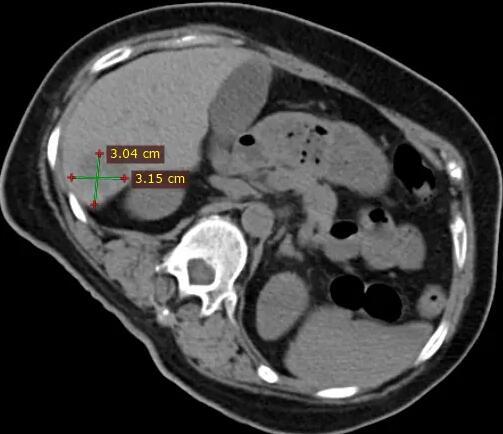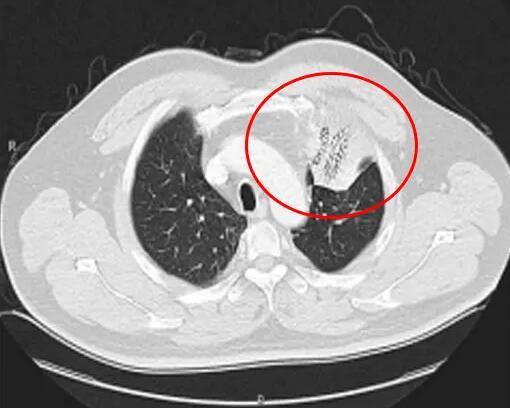Hygea Medical Technology Co., Ltd., founded in 2010, is headquartered in Haidian District, Beijing, China. As a National High-tech Enterprise integrating R&D, production, sales and marketing, the company focuses on Interventional Oncology fields of "percutaneous intervention" and "transvascular intervention".The first released product, "Co-Ablation System", is leading the industry with the cutting-edge technology, the product introduces the first combined ablation system in the world by integrating cryoablation and hyperthermia ablation in one system. In 2020, Co-Ablation System obtained the CE Marking Certificate and started product marketing in European countries. The Co-Ablation System AI Epic series has won the iF DESIGN AWARD 2020.The company has set up Beijing Key Laboratory of Cryogenic Biomedical Engineering and Post-Doctoral Research Center. As to patents, the company obtains more than 150 patents both in China and abroad. Hygea Medical Technology Co., Ltd. was granted awards of the William Begell Medal, National Specialized and New "Little Giant" Enterprise, First Prize of Beijing Science and Technology Award, etc.We are committed to creating a minimally invasive treatment platform-type enterprise.https://www.hygeamedtech.com/
Don't wanna be here? Send us removal request.
Text
AI Epic™ Cryosurgical System
Integrates the advantages of cryoablation and hyperthermia ablation
for enhancing the minimally invasive cancer treatment outcomes of multiple solid tumors.
AI Epic™ S40 Cryoablation System
Efficient
Wide temperature range from -196℃ to 80℃ with fast freezing and heating rate for a powerful and complete tumor destruction;
Stimulated immune response strengthens the therapeutic effect.
Precise
Visible and controllable ablation zone with the guidance of CT or ultrasound for accurate eradication of tumors.
Affordable
Liquid nitrogen and ethanol as working medium greatly reduce the cost of each treatment.
Compact
All-in-one design with built-in dewars, no extra gas cylinders and conveying tube required.
User Friendly
Touch screen, electric power assist, customisable program workflow and a series of designs enables the convenience of operation.
Elite™ Disposable Ablation Probe
Superior Performance
Ultra-low temperature ensures a fast cooling rate and creates large lethal zones.
High Temperature
Hyperthermia ablation efficiently stops probe tract bleeding and prevents tumor implantation metastasis.
Available
14 specifications of probe varied by different diameters, length and treatment zones to satisfy various clinical needs.
Simple
Plugin design and easy to use.

0 notes
Text
Cryoablation stands out as a highly effective palliative treatment option for individuals grappling with pancreatic cancer, offering a range of benefits that contribute to an improved quality of life. It has the advantage of minimal invasion and can safely bring less pain to patients, ultimately leading to less postoperative pain and a quicker recovery period.
Treatment pathway of cryoablation pancreatic cancer:
1. Treatment of pancreatic head tumors through the transabdominal approach. This method allows for the controlled application of extreme cold temperatures to freeze and subsequently destroy the cancerous cells, effectively impeding the progression of the disease.
2. Treatment of tumors located in the body or tail of pancreas through dorsal approach. In cases where tumors are located in the body or tail of the pancreas, a dorsal approach is adopted during cryoablation. This targeted technique ensures the thorough treatment of tumors situated in these regions, further expanding the applicability of cryoablation across various pancreatic cancer presentations.
The significance of cryoablation extends beyond its technical approach, encompassing a holistic patient-centric perspective. By minimizing invasion and mitigating pain, cryoablation not only addresses the physiological aspects of pancreatic cancer but also attends to the emotional and psychological well-being of individuals undergoing treatment. This comprehensive approach underscores the importance of integrating innovative and patient-friendly interventions in the ongoing battle against pancreatic cancer, offering a ray of hope for those facing this challenging diagnosis.
Pancreas Cancer Case Sharing
Case 1
Cryoablation for pancreatic cancer survival
Case 2
Puncture through left lobe of liver
Case 3
Puncture through dorsal approach

0 notes
Text
Liver cancer cryoablation, a minimally invasive therapeutic procedure, has emerged as a promising option for treating certain cases of liver cancer. Cryoablation for pain involves the use of extreme cold temperatures to destroy cancerous cells within the liver while preserving as much healthy tissue as possible. This technique is particularly relevant for patients who may not be suitable candidates for surgery or other conventional treatments.
During the cryoablation procedure, a thin, needle-like probe is inserted directly into the tumor within the liver. This probe delivers extremely low temperatures, typically reaching below -40 degrees Celsius, to create an ice ball that engulfs and destroys the cancer cells. The freezing and thawing cycles induce cellular injury, leading to the death of the targeted cancerous tissue.
One significant advantage of cryotherapy for liver cancer is its ability to treat tumors in a localized manner. This precision is crucial for tumors that are not easily accessible through surgery or for patients with multiple small tumors. Additionally, cryoablation is well-tolerated by many patients and often performed on an outpatient basis.
The success of liver cancer cryoablation depends on various factors, including the size and location of the tumor. Small tumors located near the liver surface are generally more amenable to cryoablation. For larger tumors or those situated near major blood vessels, a combination of therapies or alternative treatments may be considered.
Clinical studies have shown that liver cryoablation cancer treatment can provide effective tumor control and potentially improve survival rates, especially when used in conjunction with other therapeutic modalities. However, like any medical procedure, there are associated risks and considerations, including the potential for bleeding, infection, or damage to nearby organs.
As technology advances and research in the field of oncology progresses, liver cancer cryoablation is expected to play an increasingly significant role in the comprehensive management of liver cancer. Its minimally invasive nature, coupled with its potential for treating challenging cases, positions cryoablation as a valuable tool in the ongoing fight against liver cancer.
Liver Cancer Case Sharing
Case 1
Case Characteristics
The lesion was under the liver capsule at VI segment of the liver and was adjacent to the right kidney. The preoperative CT scan showed that the therapeutic lesion was in the right lobe of liver, sized at 30.4×31.5 mm.
cryotherapy liver
Ablation-two cycles
(freezing for 20min + heating re-warming for 5min)
Case 2
Case Characteristics
The lesion was adjacent to portal vein. CT scan showed that the lesion was at the junction of IV and V segments, sized as 41×32mm.
Ablation-two cycles
(freezing for 20min + heating re-warming for 6min)

0 notes
Text
Cryosurgery, also known as cryotherapy or cryoablation, has emerged as a promising and innovative approach in the treatment of bone cancer. This minimally invasive technique harnesses the power of extreme cold to destroy cancerous cells, offering a viable alternative to traditional methods such as surgery or radiation therapy.
In cryoablation for bone cancer, a specialized probe is inserted directly into the tumor site under the guidance of imaging techniques like ultrasound or CT scans. Liquid nitrogen or argon gas is then circulated through the probe, creating an intensely cold environment that freezes the cancer cells. The freezing process, known as cryonecrosis, induces cellular damage and triggers a cascade of events leading to cell death.
One of the key advantages of cryosurgery is its ability to precisely target the cancerous tissue while sparing the surrounding healthy bone structures. This targeted approach minimizes collateral damage and preserves the functionality of adjacent joints and organs. Additionally, cryosurgery is associated with reduced postoperative pain, shorter recovery times, and lower complication rates compared to traditional surgeries.
The effectiveness of cryosurgery in treating bone cancer lies in its ability to not only eliminate the primary tumor but also to stimulate an immune response against cancer cells. The freezing and thawing process disrupts the blood supply to the tumor, creating an inhospitable environment for cancer cell survival.
Despite the promising outcomes, cryosurgery for bone cancer is not suitable for all cases, and careful patient selection is crucial. The procedure is often considered for localized tumors in the early stages, and its success may vary depending on factors such as tumor size, location, and histological characteristics.
In conclusion, cryosurgery represents a groundbreaking advancement in the field of bone cancer treatment. This technique combines precision, minimal invasiveness, and favorable outcomes, offering new hope for patients facing the challenges of bone cancer. Ongoing research and clinical trials continue to refine the application of cryosurgery, positioning it as a valuable tool in the multidisciplinary approach to combating this formidable disease.
Bone Cancer Case Sharing
Case 1
Cryosurgery for bone cancer

0 notes
Text
Cryotherapy, traditionally associated with the treatment of musculoskeletal injuries and skin conditions, is now emerging as a potential therapeutic avenue for respiratory health, specifically targeting lung-related disorders. While cryotherapy has been widely acknowledged for its anti-inflammatory and analgesic properties, its application to the respiratory system, often referred to as "cryotherapy for lungs", is gaining attention in the medical community.
The concept involves exposing the respiratory tract to extremely cold temperatures, typically below -100 degrees Celsius, using techniques like cryoablation or inhalation of cold air. The rationale behind this approach lies in the ability of extreme cold to constrict blood vessels and reduce inflammation. In the context of lung health, this could offer relief for conditions characterized by chronic inflammation, such as asthma, chronic obstructive pulmonary disease (COPD), and even certain respiratory infections.
Research studies exploring cryosurgery for lung cancer are still in the early stages, but preliminary findings suggest promising outcomes. Pulmonary vein cryoablation, a procedure involving the use of extremely cold temperatures to destroy abnormal tissues, has shown potential in treating lung tumors. The precise application of cold to targeted areas can effectively eliminate cancerous cells while minimizing damage to surrounding healthy tissue.
In the case of inflammatory respiratory conditions, inhaling cold air during cryotherapy sessions may help soothe irritated airways and reduce the severity of symptoms. The cold air is thought to constrict the blood vessels in the lungs, decreasing blood flow and inflammation in the airways.
It's important to note that while cryotherapy lung cancer holds promise, further research is needed to establish its safety, efficacy, and optimal protocols for different respiratory conditions. The potential risks and side effects, such as bronchospasm or exacerbation of certain lung conditions, also need thorough examination.
As the field of cryotherapy continues to evolve, collaborations between pulmonologists, cryotherapy specialists, and researchers will be crucial in refining techniques and expanding our understanding of how extreme cold can be harnessed to promote lung health. The integration of cryotherapy into respiratory care could offer a novel and complementary approach to existing treatments, ushering in a new era in pulmonary medicine.
Lung Cancer Case Sharing
Case 1
Case Characteristics
(1) The lesion was close to chest wall. CT scan showed that the left upper lobe lung cancer was enlarged.
(2) After treatment by radioactive particles.
(3) No complication during and after surgery.
cryosurgery for lung cancer
Ablation-two cycles
(freezing for 20min + heating re-warming for 7min)
Reexamination 1 month after surgery
The reexamination 6 months after surgery showed complete remission (CR)
Case 2
Case Characteristics
(1) The lesion was close to chest wall, and no injury of chest wall occurred .
(2) CT scan showed that there was a lesion at the junction of S4 and S5, sized as 15.1×11.8mm.
Cryotherapy Lung Metastases
Ablation-two cycles
(freezing for 20min + heating re-warming for 7min)

1 note
·
View note